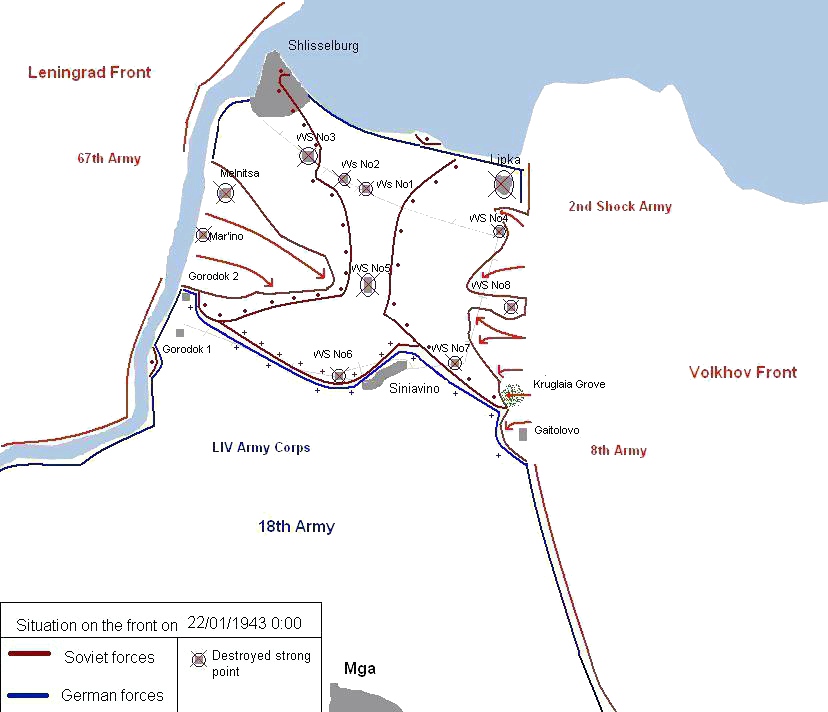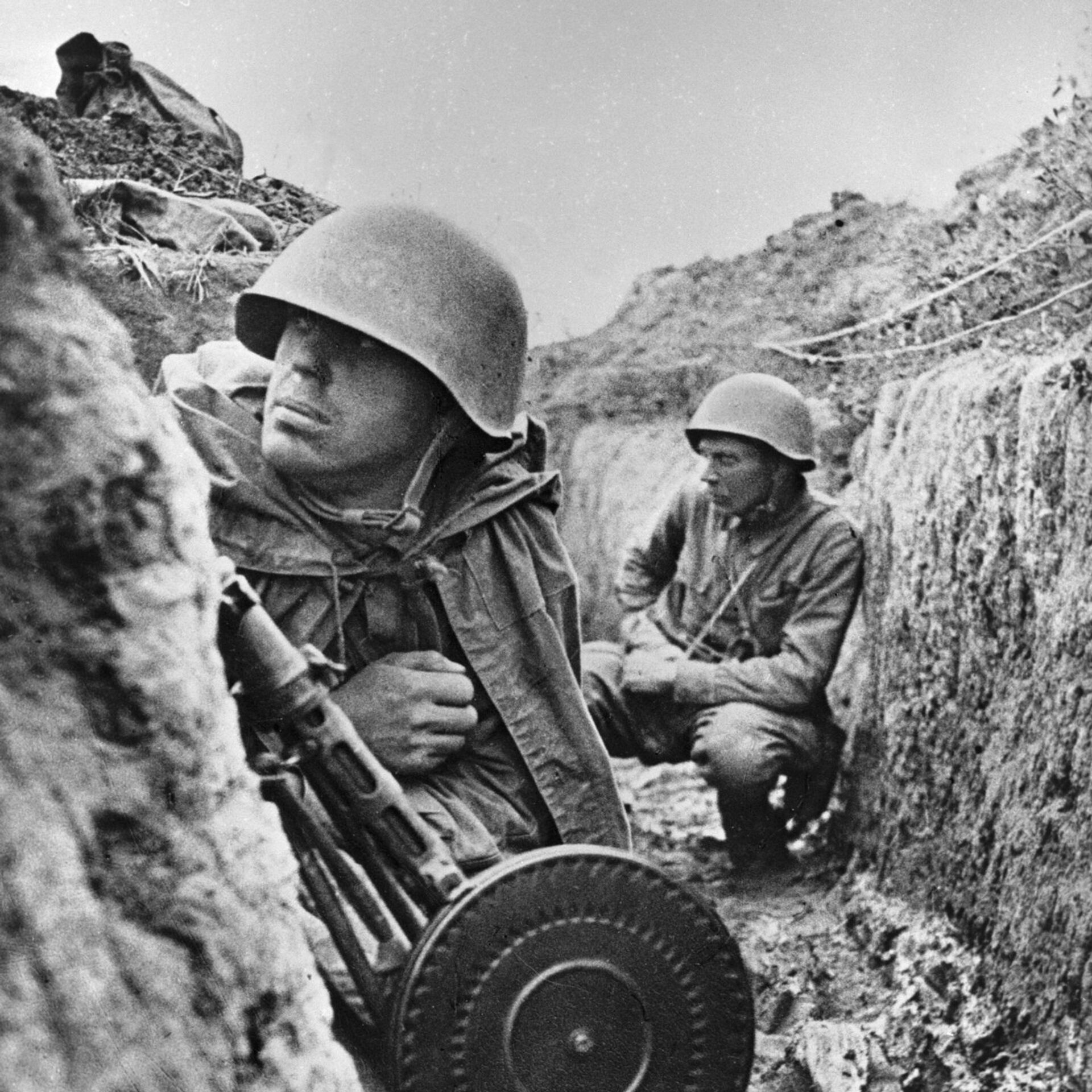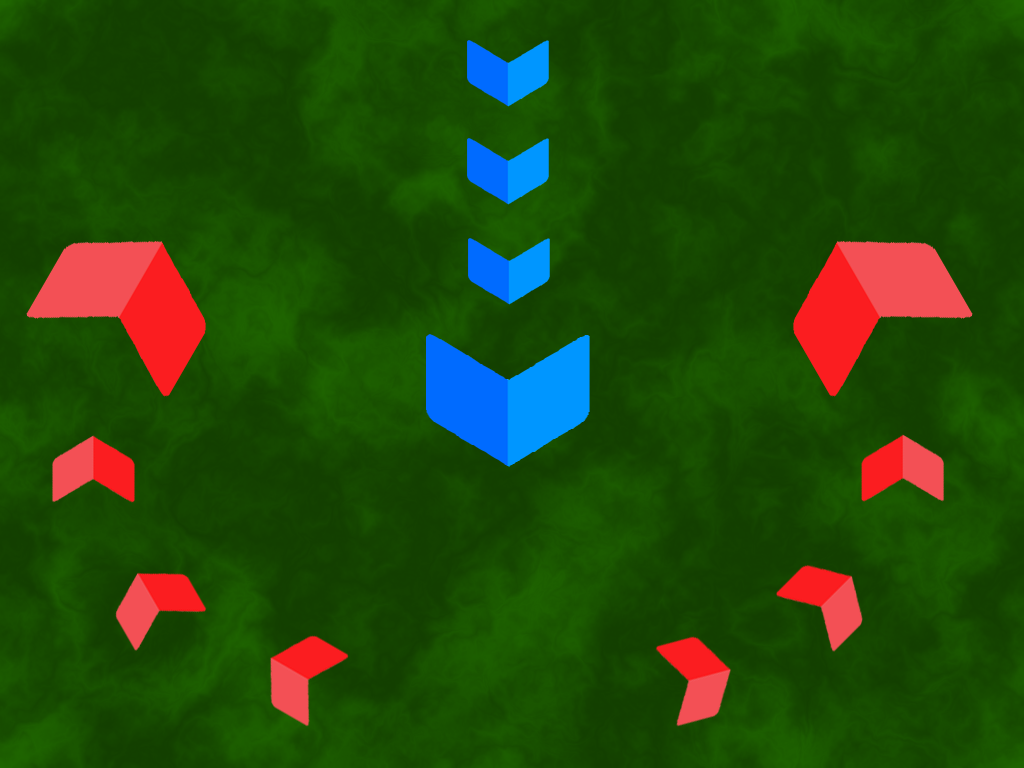|
Battle Of Krasny Bor
The Battle of Krasny Bor was part of the Soviet offensive Operation Polyarnaya Zvezda in the Eastern Front of World War II. It called for a pincer attack near Leningrad to build on the success of Operation Iskra and completely lift the siege of Leningrad, in the process encircling a substantial part of the German 18th Army. The offensive near the town of Krasny Bor formed the western arm of the pincer. The Soviet offensive began on Wednesday, 10 February 1943, and produced noticeable gains on the first day but rapidly became a stalemate. The strong defense by the Spanish Blue Division and the German SS Polizei Division gave the German forces time to reinforce their positions. By February 13, the Soviet forces had stopped their offensive in this sector. Background The siege of Leningrad The siege of Leningrad began in early autumn 1941. By September 8, German and Finnish forces had surrounded the city and cut all supply routes to Leningrad and its suburbs. However, the or ... [...More Info...] [...Related Items...] OR: [Wikipedia] [Google] [Baidu] |
Eastern Front (World War II)
The Eastern Front of World War II was a Theater (warfare), theatre of conflict between the European Axis powers against the Soviet Union (USSR), Polish Armed Forces in the East, Poland and other Allies of World War II, Allies, which encompassed Central Europe, Eastern Europe, Northern Europe, Northeast Europe (Baltic states, Baltics), and Southeast Europe (Balkans) from 22 June 1941 to 9 May 1945. It was known as the Great Patriotic War (term), Great Patriotic War in the Soviet Union – and still is in some of its successor states, while almost everywhere else it has been called the ''Eastern Front''. In present-day German and Ukrainian historiography the name German-Soviet War is typically used. The battles on the Eastern Front of the Second World War constituted the largest military confrontation in history. They were characterised by unprecedented ferocity and brutality, wholesale destruction, mass deportations, and immense loss of life due to combat, starvation, expos ... [...More Info...] [...Related Items...] OR: [Wikipedia] [Google] [Baidu] |
Battle Of Stalingrad
The Battle of Stalingrad (23 August 19422 February 1943) was a major battle on the Eastern Front of World War II where Nazi Germany and its allies unsuccessfully fought the Soviet Union for control of the city of Stalingrad (later renamed to Volgograd) in Southern Russia. The battle was marked by fierce close-quarters combat and direct assaults on civilians in air raids, with the battle epitomizing urban warfare. The Battle of Stalingrad was the deadliest battle to take place during the Second World War and is one of the bloodiest battles in the history of warfare, with an estimated 2 million total casualties. Today, the Battle of Stalingrad is universally regarded as the turning point in the European Theatre of war, as it forced the '' Oberkommando der Wehrmacht'' (German High Command) to withdraw considerable military forces from other areas in occupied Europe to replace German losses on the Eastern Front, ending with the rout of the six field armies of Army G ... [...More Info...] [...Related Items...] OR: [Wikipedia] [Google] [Baidu] |
STAVKA
The ''Stavka'' (Russian and Ukrainian: Ставка) is a name of the high command of the armed forces formerly in the Russian Empire, Soviet Union and currently in Ukraine. In Imperial Russia ''Stavka'' referred to the administrative staff, and to the General Headquarters in the late 19th-century Imperial Russian armed forces and subsequently in the Soviet Union. In Western literature it is sometimes written in uppercase (''STAVKA''), although whether it is an acronym is a subject of debate. ''Stavka'' may refer to its members, as well as to the headquarters location (its original meaning from the old Russian word ''ставка'', 'tent'). Stavka of the Supreme Commander during World War I The commander-in-chief of the Russian army at the beginning of World War I was Grand Duke Nicholas Nicholaievitch, a grandson of Tsar Nicholas I. Appointed at the last minute in August 1914, he played no part in formulating the military plans in use at the beginning of the war. Nik ... [...More Info...] [...Related Items...] OR: [Wikipedia] [Google] [Baidu] |
Volkhov Front
The Volkhov Front (russian: Волховский фронт) was a major formation of the Red Army during the first period of the Second World War. It was formed as an expediency of an early attempt to halt the advance of the Wehrmacht Army Group North in its offensive thrust towards Leningrad. Initially the front operated to the south of Leningrad, with its flank on Lake Ladoga. First formation The Volkhov Front was formed on 17 December 1941 from the left wing of the Leningrad Front and elements of the Reserve of the Supreme High Command (''Stavka'' Reserve) during the conduct of the Tikhvin Offensive operation under the command of the Army General Kirill Meretskov, with General Grigory Stelmakh (former commander of the 4th Army) as Chief of Staff and Army Commissar of 1st rank A.I.Zaporozhets.Meretskov, On the service of the nation, Ch.6 Initially Sokolov's 26th Army (later 2nd Shock Army) and Galanin's 59th Armies were allocated to the Front's formation. The Front also ... [...More Info...] [...Related Items...] OR: [Wikipedia] [Google] [Baidu] |
Kirill Meretskov
Kirill Afanasievich Meretskov (russian: Кири́лл Афана́сьевич Мерецко́в; – 30 December 1968) was a Soviet military commander. Having joined the Communist Party in 1917, he served in the Red Army from 1920. During the Winter War of 1939–1940 against Finland, he had the task of penetrating the Mannerheim Line as commander of the 7th Army. He was awarded the title of Hero of the Soviet Union shortly afterwards. The NKVD arrested Meretskov at the start of invasion of the Soviet Union. Released two months later, he returned to command the 7th Army and later the Volkhov Front during the 1941–1944 siege of Leningrad. He commanded the Karelian Front from February 1944, notably the Petsamo–Kirkenes Offensive of October 1944. From April 1945 he was assigned to the Far East, where he commanded a front during the Soviet invasion of Japanese Manchuria. During the war he reached the rank of Marshal of the Soviet Union. [...More Info...] [...Related Items...] OR: [Wikipedia] [Google] [Baidu] |
Leningrad Front
The Leningrad Front (russian: Ленинградский фронт) was formed during the 1941 German approach on Leningrad (now Saint Petersburg) by dividing the Northern Front into the Leningrad Front and Karelian Front The Karelian Front russian: Карельский фронт) was a front (a formation of Army Group size) of the Soviet Union's Red Army during World War II, and operated in Karelia. Wartime The Karelian Front was created in August 1941 when ... on August 27, 1941. History The Leningrad Front was immediately given the task of containing the German drive towards Leningrad and defending the city from the approaching Army Group North. By September 1941, German forces to the south were effectively stopped on the outskirts of Leningrad, initiating the two-and-a-half-year-long siege of Leningrad. Although Finnish Army, Finnish forces to the north stopped at the old Finnish–Soviet border, the Leningrad front suffered severe losses on the Continuation War, F ... [...More Info...] [...Related Items...] OR: [Wikipedia] [Google] [Baidu] |
Siege Of Leningrad
The siege of Leningrad (russian: links=no, translit=Blokada Leningrada, Блокада Ленинграда; german: links=no, Leningrader Blockade; ) was a prolonged military blockade undertaken by the Axis powers against the Soviet city of Leningrad (present-day Saint Petersburg) on the Eastern Front of World War II. Germany's Army Group North advanced from the south, while the German-allied Finnish army invaded from the north and completed the ring around the city. The siege began on 8 September 1941, when the Wehrmacht severed the last road to the city. Although Soviet forces managed to open a narrow land corridor to the city on 18 January 1943, the Red Army did not lift the siege until 27 January 1944, 872 days after it began. The blockade became one of the longest and most destructive sieges in history, and it was possibly the costliest siege in history due to the number of casualties which were suffered throughout its duration. While not classed as a war crime at the ... [...More Info...] [...Related Items...] OR: [Wikipedia] [Google] [Baidu] |
Operation Iskra
Operation Iskra (russian: операция Искра , translation = Operation Spark), a Soviet military operation in January 1943 during World War II, aimed to break the Wehrmacht's siege of Leningrad. Planning for the operation began shortly after the failure of the Sinyavino Offensive. The German defeat in the Battle of Stalingrad in late 1942 had weakened the German front. By January 1943, Soviet forces were planning or conducting offensive operations across the entire German-Soviet Front, especially in southern Russia; Iskra formed the northern part of the wider Soviet 1942–1943 winter counteroffensive.Glantz p. 259 The operation was conducted by the Red Army's Leningrad Front, Volkhov Front, and the Baltic Fleet from 12 to 30 January 1943 with the aim of creating a land connection to Leningrad. Soviet forces linked up on 18 January, and by 22 January, the front line had stabilised. The operation successfully opened a land corridor wide to the city. A railroad was swif ... [...More Info...] [...Related Items...] OR: [Wikipedia] [Google] [Baidu] |
Pincer Attack
The pincer movement, or double envelopment, is a military maneuver in which forces simultaneously attack both flanks (sides) of an enemy formation. This classic maneuver holds an important foothold throughout the history of warfare. The pincer movement typically occurs when opposing forces advance towards the center of an army that responds by moving its outside forces to the enemy's flanks to surround it. At the same time, a second layer of pincers may attack the more distant flanks to keep reinforcements from the target units. Description A full pincer movement leads to the attacking army facing the enemy in front, on both flanks, and in the rear. If attacking pincers link up in the enemy's rear, the enemy is encircled. Such battles often end in surrendering or destroying the enemy force, but the encircled force can try to break out. They can attack the encirclement from the inside to escape, or a friendly external force can attack from the outside to open an escape rout ... [...More Info...] [...Related Items...] OR: [Wikipedia] [Google] [Baidu] |
Operation Polyarnaya Zvezda
Operation Polar Star (Russian: Операция Полярная звезда, ''Operatsia Polyarnaya Zvezda'') was an operation conducted by the Soviet Leningrad, Volkhov and Northwestern Fronts in February and March 1943. The operation was planned by Georgy Zhukov in the wake of the successful Operation Iskra and envisaged two separate encirclements. One was to be carried out in the north by the Leningrad and Volkhov Fronts near Mga and one was planned to be carried out further to the south, by the Northwestern Front, near Demyansk. The operation succeeded in recapturing the Demyansk salient but failed to encircle the German forces. The northern part of the operation failed, without gaining much ground. With the battles in the south near Kharkov and, later, Kursk using reinforcements for both sides, the frontline near Leningrad stabilised until July 1943. Battle The German's successful evacuation of the Demyansk salient before the battle shortened the frontline enough to ... [...More Info...] [...Related Items...] OR: [Wikipedia] [Google] [Baidu] |





.jpg)
.jpg)
